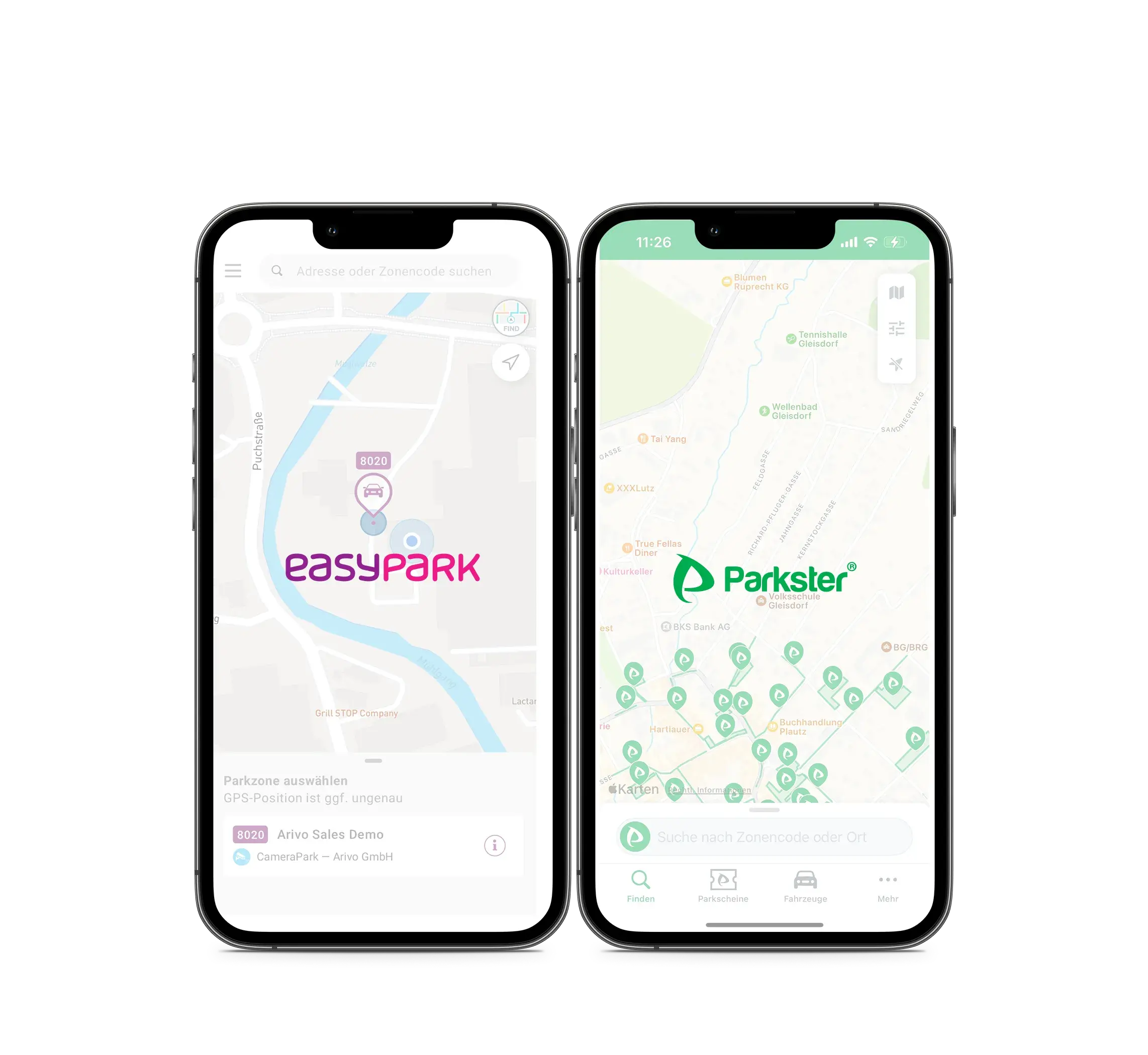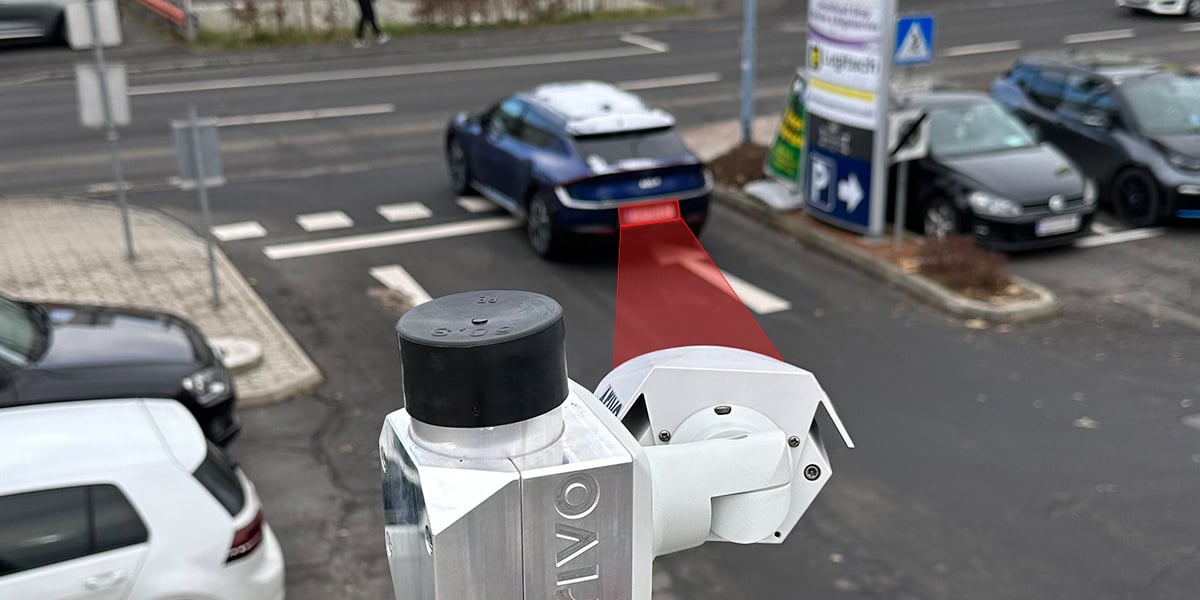
Ticketless parking systems with license plate recognition (LPR) have revolutionized parking and have been setting new standards in parking management for several years. License plate recognition offers numerous advantages in the operation of car parks and is now a promising alternative to traditional ticket systems. In this article, we compare the pros and cons of license plate recognition systems.
Table of Contents
Advantages
4. Possible for Both with Barriers and Freeflow Systems
5. Easy Integration of Mobile Parking Solutions Apps
7. Maximum Parking Convenience
Disadvantages
2. Ticketless Parking Still Unfamiliar to Some
3. Data Protection Regulations Must Be Considered
Conclusion

Advantages
1. 100 % Digital
With license plate recognition (LPR), parking becomes entirely ticketless. The license plate is automatically recognized upon entry and exit, and the parking duration is calculated accordingly.
By reading the number plates automatically, there's no need to take a ticket. This enables fully digital parking and parking management. Digital systems not only save large amounts of paper but also facilitate the automation of parking operations.
Just as in other industries, digitalization and automation in the parking sector now make possible what was once considered a pipe dream. Parking operators benefit from numerous advantages compared to traditional parking systems.
At Arivo, we've equipped numerous parking areas with our LPR and Parking Software. One example is the Stadtgarage in Dornbirn (Austria), where a completely digital parking operation is now possible.
2. Minimal Maintenance Effort
Traditional parking systems are prone to ticket jams, paper blockages, or failures of mechanical components like ticket printers or handling systems. These failures not only lead to additional costs for spare parts and labor but also to operational disruptions that interfere with the process.
In contrast, ticketless systems eliminate all moving, maintenance-prone parts, significantly reducing maintenance efforts and associated costs.
By also foregoing printed receipts or cash, the susceptibility of parking systems to mechanical issues is further reduced.
In our Arivo Parking System, the traditional receipt is replaced by a digital proof of payment. After paying at the terminal, parking customers can retrieve, save, or easily forward their receipt via a QR code scan.
3. Low Administrative Burden
Ever forgotten to refill the paper in the ticket machine? Or had customers lose their parking tickets yet again? These are common issues in traditional parking systems, leading to a significant administrative burden.
The administrative effort related to tickets is eliminated.
Constantly monitoring and maintaining ticket machines, refilling paper, and replacing lost tickets consumes valuable time and personnel resources. These tasks can be not only frustrating but also turn away attention from more important activities that could actually add value.
Tip:
For those looking to further reduce maintenance efforts, it makes sense to also operate without cash payments.
This avoids annoying and time-consuming tasks such as refilling change, cash reconciliation, and dealing with coin jams.
The administrative effort in managing long-term parking is significantly reduced.
With the possibility to store license plates in the system, there are many opportunities to save manual effort for managing long term parkers or contract clients:
- The manual distribution and mailing of parking permits are eliminated.
- Parking contracts can be signed online.
-
Customers can independently manage their personal data, license plates, and payment methods through a digital customer portal.
With the introduction of a license plate recognition-based system, these annoying tasks become a thing of the past. Staff can focus on more important tasks. The result? A smoother, more efficient, and cost-effective operation that benefits both parking users and administrators.
4. Possible for Both with Barriers and Freeflow Systems

License plate recognition gives operators the flexibility to choose between systems with or without barriers. A barrier-based system offers advantages like easier access control. However, Freeflow systems, which eliminate the need for barriers, provide even greater convenience for parkers when entering and leaving. Operators also benefit from several advantages:
- Lower investment costs
- No need for 24/7 availability in case someone is stuck at closed barriers
- Maximum flexibility and convenience for users
The best system depends on the specific use case, but the trend is clearly moving towards Freeflow. At Arivo, around 40% of our clients' parking facilities are now equipped without barriers.
If you are unsure which system suits your needs best , read our blog article "Freeflow vs. barriers - What are the Pros & Cons?" on this topic. Or let us advise you directly. Togehter, we will find the optimal solution for your requirements. Contact Arivo now
5. Easy Integration of Mobile Parking Solution Apps

Choosing a digital parking system allows the integration of mobile parking or parking apps like EasyPark or Parkster. This integration makes the parking process as smooth as possible for users. Parkers can register their license plates in advance with a parking app, enabling easy entry and exit.
Payment is handled conveniently and automatically depending on the short-term parking app provider. Depending on the provider, this can be done via credit card or through direct debit immediately after exit or collected at the end of the month.
Some parking system providers already offer ready-made interfaces to established parking apps—such as Parkster and EasyPark with Arivo. It's advisable to choose a short-term parking app that is already widely used and well-known in the region where the parking facility is located. For one of our projects with the city of Dornbirn, EasyPark was successfully integrated into the local parking system for this reason.
If you would like to implement our license plate recognition system in combination with EasyPark or Parkster, let's get in touch. Contact Arivo now
6. Fast Entry and Exit
Who doesn’t know it - after a long day, everyone just wants to get home quickly. Yet, at the parking exit, cars often queue all the way to the back. This issue is especially pronounced at high-traffic parking areas, such as at Berliner Ostbahnhof or the Congress Schladming, during peak times. License plate recognition can provide a solution.
With a ticketless parking system, there's no need to stop or wait to take or insert a ticket. Traffic flow improves significantly, making exits faster and less stressful for everyone.
Tip:
On high-traffic parking areas, it is especially advisable to rely on license plate recognition. Without the need to take or insert tickets, vehicles can enter and exit much more quickly. This optimizes traffic flow and avoids backlogs.
7. Maximum Parking Convenience
The future of the parking industry lies in comfort parking – an approach that makes the entire parking process as simple and stress-free as possible for users.
With modern license plate recognition technology, waiting times at entry and exit become a thing of the past. No more dealing with tickets, trudging to ticket machines, or stressful searches for lost parking tickets.

8. Environmentally Friendly
The use of license plate recognition drastically reduces paper consumption in parking management. Ticket machines, which are often prone to malfunctions and require regular maintenance or replacement, become unnecessary.
Since parking area equipment without movable, failure-prone parts can be used longer before disposal, there is less waste from outdated hardware. This not only reduces paper consumption but also makes the system as a whole more sustainable.
Disadvantages
1. Potential for Misreads

Despite modern systems having a very low error rate in reading license plates, a risk remains. Particularly when plates are heavily soiled with mud or snow, misreads can occur. Therefore, it is essential to choose a license plate recognition system with a detection rate close to 100%, ideally no less than 95 %. Ours even exceeds 99.5%.
Several technical measures can further reduce the risk of misreads:
- Proper camera positioning during installation of parking equipment.
- Clearly defined entry and exit lanes, using road markings, islands, or lane dividers.
- Calculating the license plate from multiple scans (assuming the vehicle is captured multiple times and quickly enough)
Since a 100% detection rate is unrealistic, it is all the more important that the associated parking or management software allows individual parking processes to be reviewed. This helps to quickly identify error sources and address problems efficiently.
2. Ticketless Parking Still Unfamiliar for Some
Ticketless parking systems with license plate recognition offer a modern and user-friendly solution but are not yet widespread. The market is increasingly moving in this direction as more and more parking garages adopt this technology. Today, there are only a few drivers who have never used such a system.
Nowadays, more and more parking operators are adopting ticketless parking systems. Only a few drivers have not yet used a facility with license plate recognition.
Initially, some parking users may find the system unfamiliar, but they usually adapt well after their first experience. Key to transitioning to a ticketless system are clear signage for the parking area and timely information for long-term parkers and contract clients about how the license plate recognition works.
It's important to clearly communicate how parking with license plate recognition works.
Our experience shows that parking users quickly adapt to a ticketless system after the switch—even those who are less tech-savvy or older. Once they experience the convenience of the digital parking system, it is unlikely that they want to go back.
3. Data Protection Regulations Must Be Considered!

As license plates are read and stored in the system for processing, it’s crucial to follow the data protection regulations when implementing license plate recognition technology in parking areas. The WKO provides detailed information on data protection-compliant license plate recognition in its guidelines for garage and parking operators.
- Signage requirement: The parking lot must clearly indicate that license plate recognition is in use and that the plate will be read upon entry and exit.
- Anonymization: After the final recorded action, such as exiting or payment, personal data is automatically anonymized.
- Adherence to deletion periods: The parking system provider must follow specified data deletion deadlines.
Our technology has been developed in accordance with the GDPR, and the GDPR compliance of Arivo’s license plate recognition has been confirmed in multiple audits.
Conclusion
Ticketless systems with license plate recognition are more sustainable and user-friendly compared to traditional ticketing systems. Parking operators benefit from reduced administrative tasks and lower maintenance costs, while parkers enjoy maximum convenience with quick entry and exit, even during peak times. The installation of a barrier system or a freeflow setup, along with the integration of parking apps, is flexible.
Potential misreads are minimized through optimal camera positioning and clearly defined entry and exit lanes, with detection rates exceeding 99%. While parkers may initially need time to adjust to the new system, experience shows that they quickly adapt and find the system easy to use. By carefully following GDPR regulations, such as signage requirements and data deletion periods, there are no privacy concerns.
Still unsure if license plate recognition is right for your car park? Feel free to contact us—we offer non-binding consultations to discuss your specific use case. Together, we can find out how our license plate recognition can make your parking operations more efficient, easier, and more comfortable.
Together, we’ll find the ideal solution for your use case.



